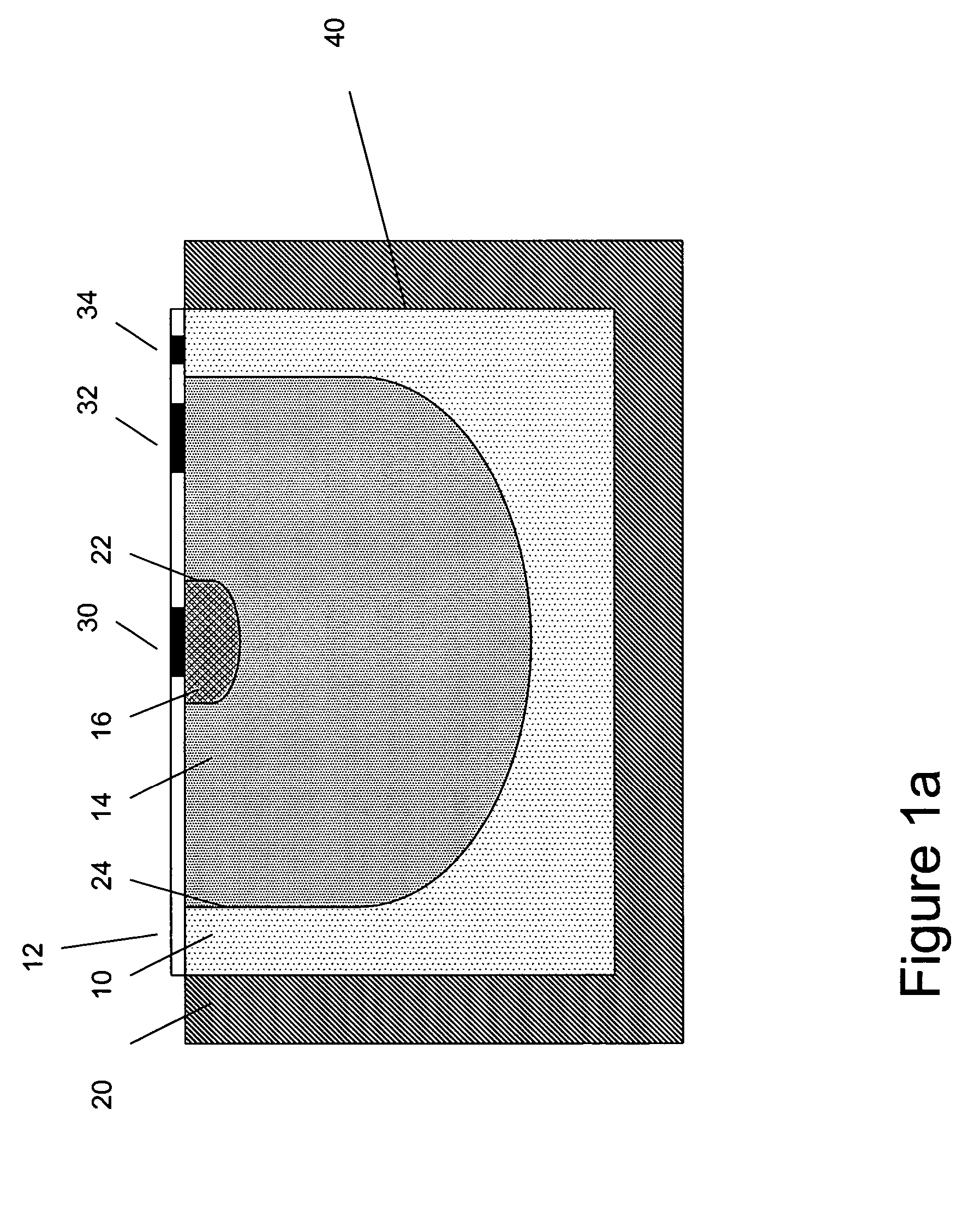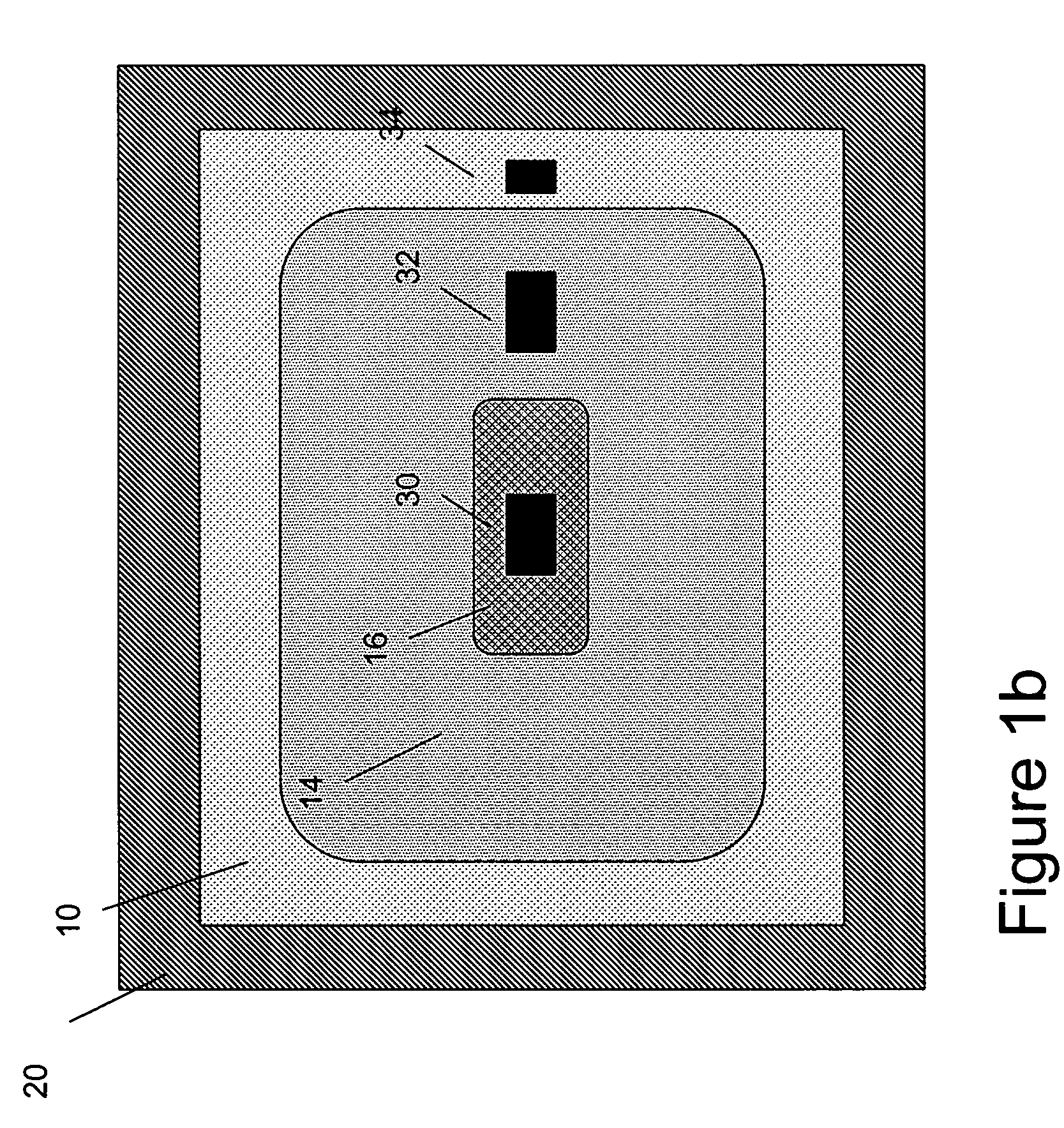Low-noise semiconductor photodetectors
a low-noise, semiconductor technology, applied in semiconductor devices, solid-state devices, radiation control devices, etc., can solve problems such as surface leakage, current flow in an external circuit, and the use of photodetectors using the photoelectric
- Summary
- Abstract
- Description
- Claims
- Application Information
AI Technical Summary
Benefits of technology
Problems solved by technology
Method used
Image
Examples
Embodiment Construction
[0024]FIGS. 1a (cross-section) and 1b (plan-view) illustrate a low noise semiconductor photodetector. The semiconductor body 10 is substantially surrounded by dielectric material or materials. A first portion of the semiconductor surface is passivated, and a second portion is unpassivated. Here a high-quality dielectric 12 with a low surface recombination velocity is formed on the top surface of the semiconductor body 10 to passivate the top surface. The body is peripherally surrounded by low quality dielectric 20 that does not passivate the peripheral surface. The semiconductor body 10 is doped p-type. An n-type area 14 is formed in the body, peripherally enclosed by the p-type layer and forming a junction 24 between the n-type and p-type layer. A second p-type layer 16 is formed in the n-type layer 14, peripherally enclosed by the n-type layer and forming a junction 22 between the inner p-type and n-type layers (16,14). Ohmic metal contacts 30, 32, and 34 are formed to all the dop...
PUM
 Login to View More
Login to View More Abstract
Description
Claims
Application Information
 Login to View More
Login to View More - R&D
- Intellectual Property
- Life Sciences
- Materials
- Tech Scout
- Unparalleled Data Quality
- Higher Quality Content
- 60% Fewer Hallucinations
Browse by: Latest US Patents, China's latest patents, Technical Efficacy Thesaurus, Application Domain, Technology Topic, Popular Technical Reports.
© 2025 PatSnap. All rights reserved.Legal|Privacy policy|Modern Slavery Act Transparency Statement|Sitemap|About US| Contact US: help@patsnap.com



